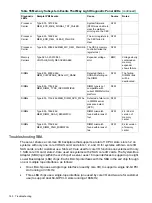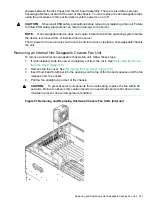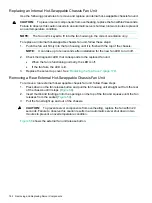
Table 67 LAN B Connector LEDs (continued)
Description
Color
Location
LED
link is enabled.
Green
Upper right
Link (upper
right)
No link
Off
Booting
shows the normal boot process, as reflected in changes to front panel LED states:
Table 68 Normal Boot Process LED States
Normal Power-Up Through
OS Boot
Diagnostic
Panel
Power
External
Health
Internal
Health
System
Health
Step
No AC power to the system.
Off
Off
Off
Off
Off
1
System is shut down, but AC
power and standby power is
active.
Off
Steady
Amber
Off
Off
Off
2
System power rails are on when
Power switch is toggled.
Off
Steady
Green
Off
Off
Off
3
System power rails are on;
BMC drives External Health
LED.
Off
Steady
Green
Steady
Green
Off
Off
4
System is booting firmware (has
passed
BOOT_START
in
firmware).
Off
Steady
Green
Steady
Green
Steady
Green
Off
5
System has finished booting
firmware and an OS is either
booting or running.
Off
Steady
Green
Steady
Green
Steady
Green
Steady
Green
6
NOTE:
In the normal boot process, shown in
, even though the BMC is running while
the system is shut down (for example, Power LED is steady amber), it doesn’t drive the External
Health LED to Steady Green until +12VDC power from the Bulk Power Supplies is applied.
The following list itemizes the steps that characterize basic platform boot flow. Step numbers
provided correspond to the steps in
:
3) System power switch turns on bulk power supplies and fans, and releases RESET on all CPUs
simultaneously, when toggled on.
5) Initial CPU firmware code fetch is PAL code from EEPROM in PDH, retrieved four bytes at a
time by DMDC in ZX2 (no shared memory or I/O devices are available at this time; for example,
they are not initially configured).
5) Firmware code stack is initially in BBRAM in PDH, retrieved 4 byes at a time, through PDH
and DMD buses.
5) PAL code configures all CPUs.
5) SAL code configures all platform CEC chips, including shared memory and all responding I/O
devices.
5) Firmware code and stack are relocated to shared memory, after all x4DIMM ranks in shared
memory are configured and tested.
5) EFI Shell is launched from shared memory, and cache lines are retrieved 128 bytes at a time
by MEMC in Zx2.
6) OS loader is launched using the EFI device driver.
6) OS boots and starts its own device drivers.
170
Troubleshooting
















































